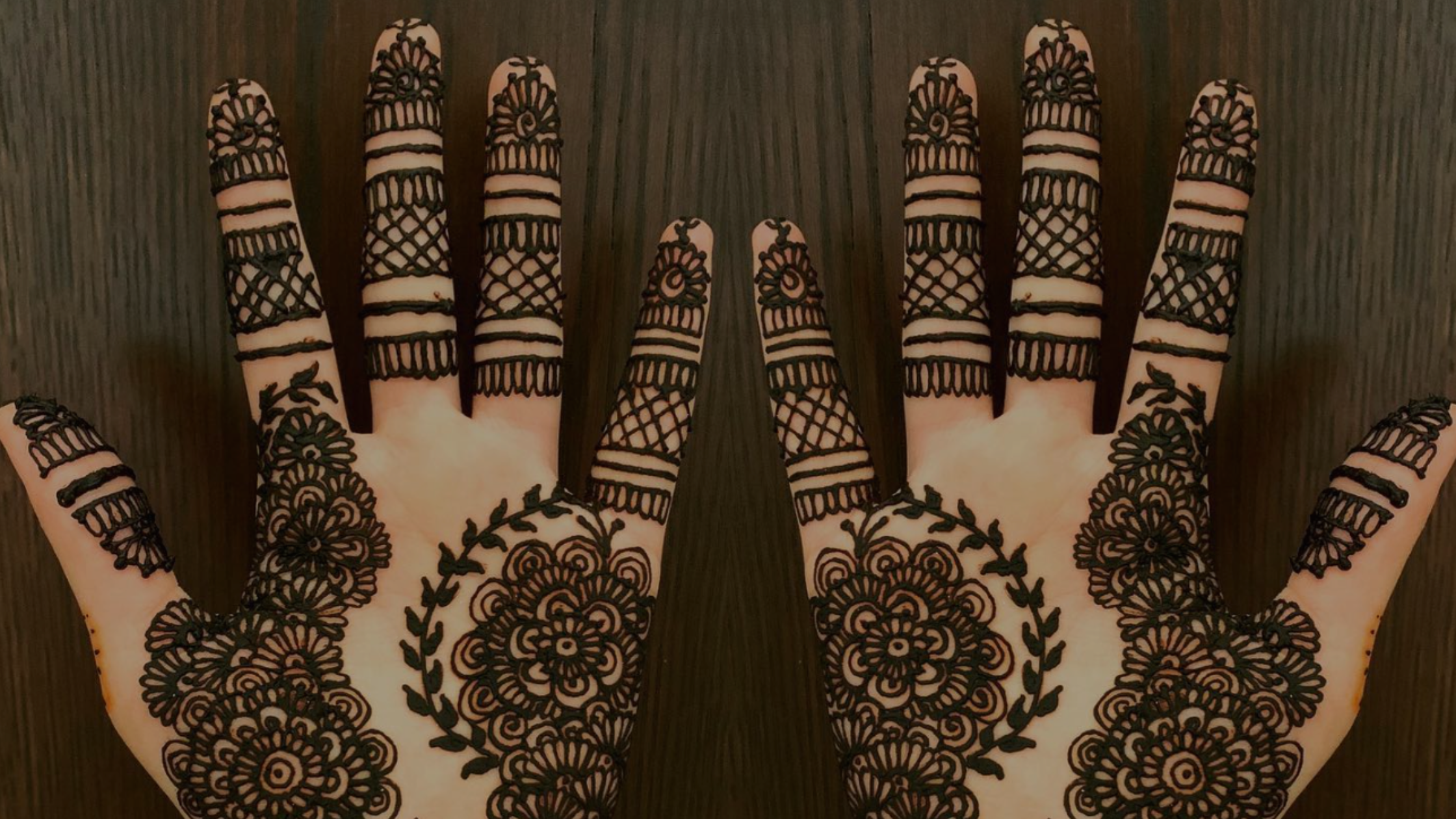Happy early Eid Mubarak VELA fam! We hope that you all have a joyous and blessed Eid Al Adha! Today we will be discussing the origins of henna and its significance on Eid. Henna has a diverse set of motifs ranging from paisleys, florals, domes, etc. and it has a rich cultural history from areas such as North Africa, South Asia, and the Arabian peninsula. Let’s dive in!
What is Henna?
Henna is derived from a tree called the Henna Tree, also known as Lawsonia inermis. Henna is made into a paste with henna powder, essential oils, sugar, and can be applied on the hair, hands, and anywhere else on the body. The Henna Tree contains lawsone, a dye, that binds to our skin and creates a reddish orange color. Henna is made by crushing the dried leaves of the henna tree into a fine powder, which is then made into a creamy paste as the powder is mixed with water and eucalyptus oil. The paste is poured into a cellophane cone, to create intricate designs and for successful application techniques. Once the henna paste is applied on the skin, it begins to dry up and leaves an orange stain in place of the original dark henna design. After 12 hrs, the henna becomes darker, into a rich maroon or mahogany stain. After 1-2 weeks, the henna begins to fade.

Henna in Islam
Henna has significance in Islam especially for religious holidays, such as Eid al Fitr and Eid al Adha, weddings, etc. Henna is mainly popular among women as they adorn their hands with it, showcasing femininity, but men can also use henna on their hair and beard. The Messenger of Allah (PBUH) said: “The best things to use to change grey hair are henna and katam.” (Al-Tirmidhi 1753). Henna is encouraged to be applied on joyous occasions such as Eid and weddings because henna is an expression of creativity and beauty. Some cultures, like South Asians, apply henna for almost any occasion including baby showers, henna night traditions, nikaah day celebrations, etc.
South Asian Henna Designs
South Asian henna designs typically contain flowers and paisleys, and are very detailed. The most intricate South Asian henna styles can be seen with bridal henna. South Asian henna designs also have unique finger designs to showcase the filled henna design look.
Arabian Henna Designs
Arabian henna designs contain flowers and arches and are typically less detailed compared to South Asian henna designs. Arabian henna designs often have henna on one finger, showcasing its simplicity.
North African Henna Designs
North African henna designs contain domes, squares, triangles, and various line patterns. These designs are similar to South Asian henna designs because they also tend to be very detailed and are known for their symmetrical patterns.



Leave a comment